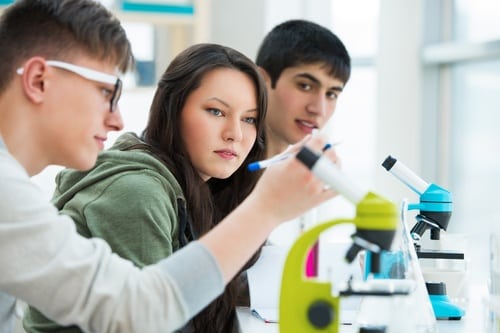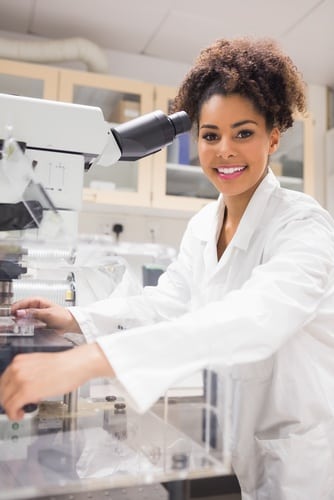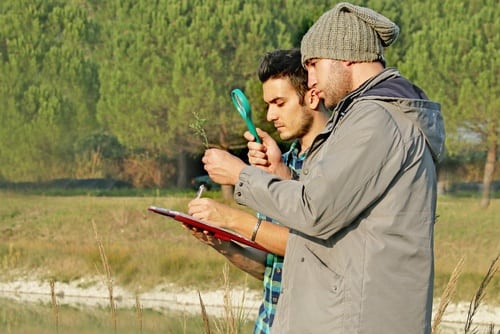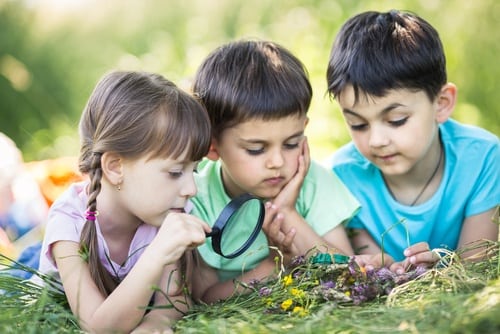1. Set Aside Science Until Middle School
In Kindergarten, we’re taught the ABCs and how to count to 10. These linear foundations lead to complex language and math skills needed to write persuasive essays, debates, proofs, and calculus in high school and beyond. Due to time constraints and standardized tests that stress Math and ELA, science is often set aside until our students reach middle school or older. Here, they are taught the foundation of science in linear steps: the scientific method.
The names of each step of the scientific method may differ, but in a nutshell they are: 1) Observe, 2) Predict, 3) Experiment, 4) Analyze, 5) Conclude. Sound familiar?
How to overcome our tendency to save science till later? Just like our alphabet, the scientific method is the backbone of science. It should be taught in a simple way during kindergarten by substituting core words and directions for each step, such as: 1) Use your senses, 2) What do you think will happen?, 3) Draw observations, 4) What new thing(s) did you learn? Most importantly, keep a “diary” of pictures and words within a journal.
As a science course writer, make sure you include time for students to fully analyze their results and revise their conclusions and hypotheses.
2. Science Is Linear

By the time students reach high school, they should have learned to reason beyond a linear scientific method. Authentic science is NOT linear. Students should be taught to take notes, solve problems, troubleshoot, and—most importantly—REVISE each step along the way. Ultimately, a hypothesis is narrowed down to a publishable form and conclusions are peer-reviewed (as are those of the scientific community) to assess strength, validity, ethics, and applications. Conclusions are then REVISED, hypotheses tweaked or rewritten, and experiments retested. Learn more through this Berkley article, “The real process of sciencereal process of science.”
3. Science Is Not Creative

Due to time constraints, standardized testing, and a lack of public understanding about the nature of science, high schoolers are often: 1) given fabricated, “canned” experiments that produce the expected results; 2) do not have the time to peer review and revise; 3) do not learn from experiencing that science is creative; and 4) are left with the misconception that if the results are not as expected then the experiment was “wrong,” the teacher is at fault, and science is “hard,” annoying, and boring.
These same students, however, do well on standardized science tests. Why? Our tests have preset results and conclusions so they can be efficiently and subjectively scored. How will these students vote intelligently or compete globally in science? Not so well—chiefly because they have not experienced how to troubleshoot their way through complex problems. Need Ideas? Read “Teaching Creativity and Inventive Problem Solving in Science” here.
4. Computer Simulations and e-Labs Replace Hands-on Learning

Big mistake! First, a computer simulation must include ways for students to CREATIVELY solve problems—something artificial intelligence currently lacks. In addition, many scientists are hands-on learners. They get positive reinforcement from skills built by using lab tools and equipment. To create a population of people who are passionate about science, we MUST include hands-on activities. Most teachers know this, but they are limited by budget cuts which choose to invest in seemingly long-term computer solutions over “short-term” consumable supplies. Read the Amercian Chemical Society Position Statement on this subject here.
5. Science Is “TRUE”

Having been taught the basic linear form of the scientific method and led to a predetermined conclusion, students assume that science is the ultimate TRUTH and should not be questioned. Nothing can be further from the truth. Scientific findings should always be questioned and reevaluated—especially in our current climate of jumping forward by leaps and bounds in technology and subsequent accumulation of new information. Read more at “Science Aims to Explore and Understand.”
The solution to these misconceptions? Create a curriculum that lays down foundations, like in math and ELA, merges science with these subjects as authentic (relevant) applications, and stresses the circular scientific process over content—beginning in kindergarten.
More Blog Posts
10 Great Resources Every Science Course Writer Can Use






